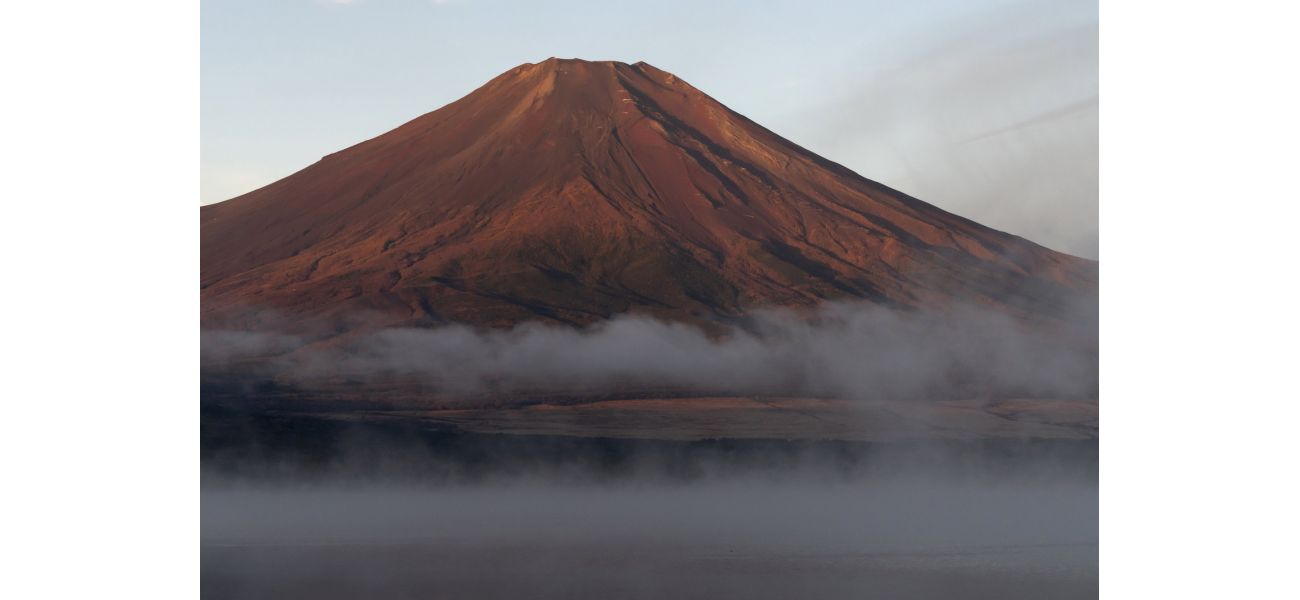Mount Fuji recently set a new 130-year record, which is cause for concern.
The famous mountain appears to have a new appearance.
October 31st 2024.

The majestic Mount Fuji, known for its snow-capped peak, is one of the most recognized and beloved landmarks in Japan. However, this year, the iconic snow cover has been noticeably absent, breaking a 130-year record for the latest date of snowfall on the volcano's slopes.
Typically, the snow cap on Mount Fuji begins to form on October 2, but last year it didn't appear until October 5. The country's meteorological office attributed this delay to warmer temperatures than usual, which have persisted throughout the summer and into September. According to forecaster Yutaka Katsuta, this is the latest date for snowfall since records began in 1894, surpassing the previous record of October 26 set in 1955 and 2016.
Yutaka explained that the high temperatures during the summer and early fall have deterred the arrival of cold air, which is necessary for the formation of snow on the peak of Mount Fuji. He also mentioned that Japan has experienced its joint hottest summer on record this year, equaling the record set last year. This has led to speculation that climate change may have played a role in the delay of the snow cap's appearance.
Fortunately, the Japan Weather Association predicts that the snow will finally make its way back to Mount Fuji by November 7, as rainfall is expected early next week. This will bring joy to those who eagerly await the return of the picturesque snow-covered volcano.
For those unfamiliar with Mount Fuji, it is located on the island of Honshu, the largest island in Japan, about 60 miles west of the bustling Tokyo-Yokohama metropolitan area. The mountain stands at an impressive height of 3,776 meters, or 12,388 feet, and is a popular destination for hikers during its peak season from July to September.
This symmetrical volcano has been immortalized in countless artworks and is a source of national pride for the people of Japan. Although it last erupted about 300 years ago, it remains the highest mountain in the country. During the summer months, the snow on the slopes of Mount Fuji melts, creating a prime opportunity for hikers to conquer its steep terrain. Every year, over 220,000 people take on the challenge of reaching the summit, with many choosing to hike overnight to witness the breathtaking sunrise from the top.
However, this year has seen a decrease in the number of hikers due to the introduction of an entry fee and a daily limit on the number of visitors to the mountain. These measures were put in place to combat overtourism and preserve the natural beauty of Mount Fuji.
In conclusion, the absence of snow on Mount Fuji this year may have been a disappointment for some, but it serves as a reminder of the impact of climate change on our environment. But with the first snowfall expected to arrive soon, the beloved volcano will once again be adorned with its iconic white peak, drawing in hikers and admirers from all over the world.
Typically, the snow cap on Mount Fuji begins to form on October 2, but last year it didn't appear until October 5. The country's meteorological office attributed this delay to warmer temperatures than usual, which have persisted throughout the summer and into September. According to forecaster Yutaka Katsuta, this is the latest date for snowfall since records began in 1894, surpassing the previous record of October 26 set in 1955 and 2016.
Yutaka explained that the high temperatures during the summer and early fall have deterred the arrival of cold air, which is necessary for the formation of snow on the peak of Mount Fuji. He also mentioned that Japan has experienced its joint hottest summer on record this year, equaling the record set last year. This has led to speculation that climate change may have played a role in the delay of the snow cap's appearance.
Fortunately, the Japan Weather Association predicts that the snow will finally make its way back to Mount Fuji by November 7, as rainfall is expected early next week. This will bring joy to those who eagerly await the return of the picturesque snow-covered volcano.
For those unfamiliar with Mount Fuji, it is located on the island of Honshu, the largest island in Japan, about 60 miles west of the bustling Tokyo-Yokohama metropolitan area. The mountain stands at an impressive height of 3,776 meters, or 12,388 feet, and is a popular destination for hikers during its peak season from July to September.
This symmetrical volcano has been immortalized in countless artworks and is a source of national pride for the people of Japan. Although it last erupted about 300 years ago, it remains the highest mountain in the country. During the summer months, the snow on the slopes of Mount Fuji melts, creating a prime opportunity for hikers to conquer its steep terrain. Every year, over 220,000 people take on the challenge of reaching the summit, with many choosing to hike overnight to witness the breathtaking sunrise from the top.
However, this year has seen a decrease in the number of hikers due to the introduction of an entry fee and a daily limit on the number of visitors to the mountain. These measures were put in place to combat overtourism and preserve the natural beauty of Mount Fuji.
In conclusion, the absence of snow on Mount Fuji this year may have been a disappointment for some, but it serves as a reminder of the impact of climate change on our environment. But with the first snowfall expected to arrive soon, the beloved volcano will once again be adorned with its iconic white peak, drawing in hikers and admirers from all over the world.
[This article has been trending online recently and has been generated with AI. Your feed is customized.]
[Generative AI is experimental.]
0
0
Submit Comment





